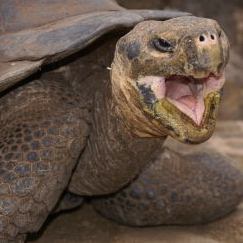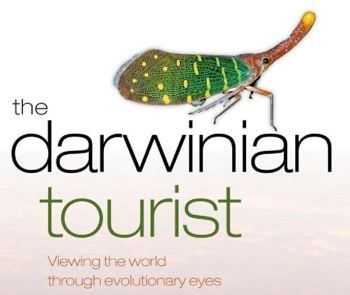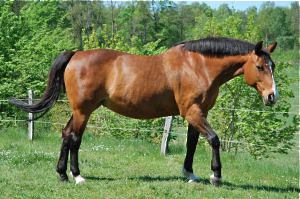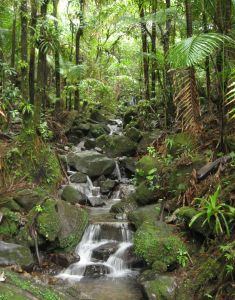Travel News
The Darwinian Tourist: Travel With A Biologist’s Perspective
 Of course, travel opens our eyes to the diversity of cultures and experiences around the world. But not everyone looks at travel through the lens of science.
Of course, travel opens our eyes to the diversity of cultures and experiences around the world. But not everyone looks at travel through the lens of science.
Peter chatted with biologist Christopher Wills, author of The Darwinian Tourist: Viewing the World Through Evolutionary Eyes to explore a whole different way to see the world.
Peter Greenberg: How did you come up with an idea like this? People are always trying to figure out the process of travel in a very one-dimensional way, but you decided to go back to the future, in a way.
Christopher Wills: Well, I’m working on four dimensions.
PG: That’s very scary right there.
CW: That’s right. You travel to a different part of the world and what amazes you, of course, is how different it all is. What I’m really after in this book is to try to explain to the reader why it is that as you go to another place in the world everything changes. The reason it changes is because you’re looking at millions or even hundreds of millions of years of separate evolution. If you go to Australia, for example, you’re surrounded by marsupial animals. Marsupials and placental animals, like us, parted company well over a hundred million years ago. The big question you have to ask when you land on the shores of Australia is: How did that happen? And that’s what the book really tries to get at.
Learn more about our amazing planet in our Eco-Travel section.
 PG: Well I’ve got to ask the question: How did that happen?
PG: Well I’ve got to ask the question: How did that happen?
CW: Marsupials started off on a chunk of an old continent that broke up a long time ago. They probably were separated from placental animals on Australia because they were separated by Antarctica. Even though Antarctica wasn’t very cold at the time it was very dark and unpleasant. Sort of like Mordor, you know, in the Lord of the Rings. And so the animals that were able to get across that huge barrier were a very small sample of the total.
PG: It’s interesting because I live on an island in New York called Fire Island, and it’s 32 miles long; it’s 50 miles east of Manhattan; the only way you get over there really is by boat, and yet we have deer. I kept on thinking, how did they get there? They didn’t swim. And then it suddenly dawned on me—this is the extent of my great knowledge of how these things happen, which is why I find your book fascinating—when the bay froze a couple of years ago, they just walked across.
CW: Absolutely. Animals are enormously resourceful, and so are plants. They can hitch rides on animals for thousands of miles.
PG: Not to mention bed bugs.
CW: Ah, yes now that brings me right up to date in New York.
PG: Bed bugs are the original hitchhikers.
Find out about Sustainable Tourism & Saving The Serengeti With National Geographic Traveler‘s Costas Christ.
 CW: You know, this kind of interaction is one that gives you a whole new way of looking at travel and how to get around the world.
CW: You know, this kind of interaction is one that gives you a whole new way of looking at travel and how to get around the world.
PG: Based on the findings you’ve made, what was the biggest surprise that you had?
CW: Oh gosh. Well, I start off the book by talking about some scuba diving expeditions I made to an area called the Lembeh Strait in Indonesia. As you dive in Lembeh they’re all kind of creatures, goggle-eyed slithery creatures sort of swimming around, and they’re all your relatives, some of them a little more distant than others, obviously. But it is interesting to be surrounded by your relatives and see how incredibly mind-bogglingly diverse they actually are.
PG: That’s the beautiful thing about what you’ve done in the book is because it’s a different kind of guidebook. From now on when I travel, I’ve got to look at that book to figure out where my relatives are.
CW: Absolutely. You’ll find them in some pretty surprising places.
PG: Yeah, like the Bronx. But you mentioned some of the relatives that are over there in the Indonesian straits area, but what about closer to home? What about just in the United States alone?
Thinking of taking an eco-travel vacation? Check out Save The Sea Turtles, Save The World: Costa Rica Volunteer Vacation.
CW: Well we’re Johnny-come-latelies to this continent. Humans arrived in the Americas only about 13,000, maybe as much as 14,000 years ago. We’ve not done a great deal of evolving since that time, but we have done a lot of changing of the environment. We probably drove many large animals to extinction.  There were horses in America when we arrived; we wiped them all out. They had to be reintroduced by the conquistadors. If you look at the history of the Americas, you find that some of our earlier relatives that go right back to the beginning of the ancient mammals did live in the Americas. And then some of them of course have evolved into the little monkeys that you’ll find throughout Central and South America. So there has been a big gap in our evolutionary history in the Americas. A gap that is, of course, filled in other parts of the world. But the fascinating question is, why didn’t these animals go in the same direction that we did towards bigger brains and things like that? This is a big and very puzzling question.
There were horses in America when we arrived; we wiped them all out. They had to be reintroduced by the conquistadors. If you look at the history of the Americas, you find that some of our earlier relatives that go right back to the beginning of the ancient mammals did live in the Americas. And then some of them of course have evolved into the little monkeys that you’ll find throughout Central and South America. So there has been a big gap in our evolutionary history in the Americas. A gap that is, of course, filled in other parts of the world. But the fascinating question is, why didn’t these animals go in the same direction that we did towards bigger brains and things like that? This is a big and very puzzling question.
PG: We talk about biodiversity, which always gets me a little confused because you’ll find that just about everywhere, and yet it’s hard to explain it.
CW: The reason I really got involved in this book is because I’ve been traveling around the world working with tropical ecologists, people who spend their lives in the tropics measuring biodiversity. We’ve gotten together and looked at some of the data that has been collected over the last few years. We have found some interesting patterns and interesting explanations for why there are so many species in the tropics. A bit too complicated for a short segment …
PG: I’ll be the judge of that. Go ahead.
Check out more guests from this radio show in Ocho Rios, Jamaica.
 CW: All right, sure. Let’s say, in a tropical forest you may find a small area of the forest where there can be a thousand or more species of trees all occupying an area that you might think is just not complicated enough to support all these different species. What we’ve all found is that these trees are not living in a vacuum. They are living surrounded by their pathogens, and their predators, and the creatures that eat them. All these creatures are interacting with the trees in such a way that if a species becomes to common then their pathogens and predators can multiply unchecked, and will drive it down to smaller numbers. So there is a constant battle between the animals and the plants that occupy these complex ecosystems, and the pathogens and predators that prey upon them. It is this constantly shifting balance that explains why our ecosystems are so complex.
CW: All right, sure. Let’s say, in a tropical forest you may find a small area of the forest where there can be a thousand or more species of trees all occupying an area that you might think is just not complicated enough to support all these different species. What we’ve all found is that these trees are not living in a vacuum. They are living surrounded by their pathogens, and their predators, and the creatures that eat them. All these creatures are interacting with the trees in such a way that if a species becomes to common then their pathogens and predators can multiply unchecked, and will drive it down to smaller numbers. So there is a constant battle between the animals and the plants that occupy these complex ecosystems, and the pathogens and predators that prey upon them. It is this constantly shifting balance that explains why our ecosystems are so complex.
PG: And added to that the fact that almost every three or four months I read articles about new species being discovered at varying depths of the oceans.
CW: That’s right. We know so little about the oceans, especially the deep oceans. This is a whole universe that waits to be explored. I spend a bit of time in the book exploring the shallower parts of the seas where I’ve been able to go. But of course many scientists are able to penetrate this amazing new world far beyond the depths that I’ve been able to reach.
PG: Every pun intended, I would never call this a shallow book. It’s a fascinating read … and, you know, this is not a bad companion to bring with you on your next trip because the way the book is organized everywhere you go you open up a page and go, “I had no idea!”
Listen to the complete interview on Peter Greenberg Worldwide Radio. Just click the play button on the homepage to listen to it all week long for FREE, or sign up to be an Insider for on-demand access.
Related links on PeterGreenberg.com:












